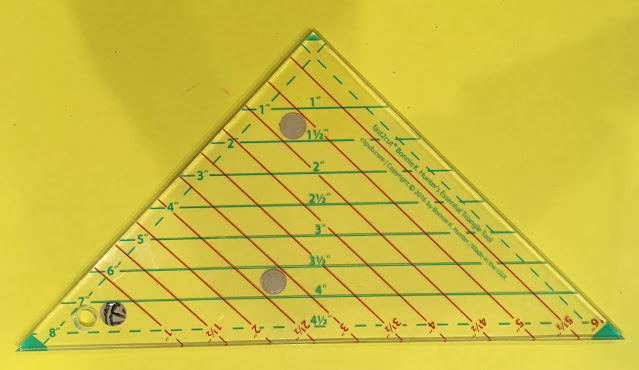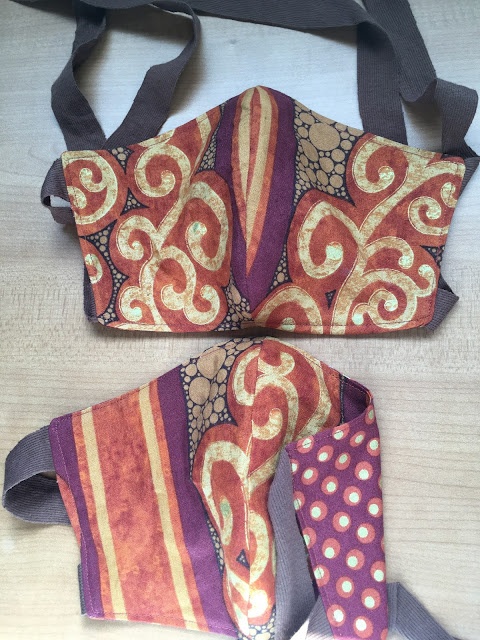Red sky at night - Sailors delight,
Red sky in morning - Sailors take warning!
I finally finished it, and it's in the mail!
I saw this panel in a quilt shop in Ketchikan, and I thought of our friends whose son attends the Coast Guard Academy, so I bought it for them. Then I got the idea that I could make it into a quilted wall hanging before I gave it to them.
This project turned out to be a lot more complicated than I was expecting, because I had no directions for it. Ultimately, I decided to include three "Storm at Sea" blocks. Then I saw a quilt on Pinterest that had the "Starry Night" blocks, and I loved how they fit in with the theme of the quilt.
Just about every step presented a challenge. The panel was an odd size, so I had to figure out what size to make the blocks and the sashing pieces. Fortunately, I have a set of templates by Marti Michell called "Long Skinny Sashing Stars." I also used Marti's "Set A, The 3" Square Basic Set." My troubles and travails are detailed in my May 15, 2019 post, So Much to Wilt About. Let's just say I learned many important lessons before I was able to get all the moving parts synchronized.
I had to put in a dark red border around the panel. It was narrower on the top and bottom than on the sides, but that's the only way I could get the panel to fit.
My quilt buddy, Susan, came with me to The Quilt Tree to help me pick out the fabric, after I had the basic plan sketched out. The nice lady at The Quilt Tree helped me figure out how much of each fabric I needed. I think we did a good job! I still like the fabric a lot, despite all my frustrations with this unruly project.
This photo of the back gives a you a better idea of what the black batik on the outermost border on the front really looks like.
On the photo of the back you can also see the dark red binding (hand sewn), the hanging sleeve (made out of the blue-violet batik I used on the front), and the label.
If you squint, you can see some of the machine-quilting I did. I used a variegated blue thread. In retrospect, that turned out to be a poor choice. I went through so many quilting scenarios in my head. Most of them turned out to be too difficult for someone like me, so I ended up with something fairly simple. I eventually realized that I did not need to be overly concerned with stabilizing the batting, since this will be a wall hanging. After much debating with myself, I determined that it would be best to leave the panel unquilted. It has a rubbery coating that would be very difficult to work with, and I couldn't settle on a good quilting plan for the panel (Outline the pictures? Geometric pattern?).
I ended up stitching-in-the-ditch around the blocks and the sashing. Then I did a free-hand serrated line of stitching in the outer black border to echo the serrated edge of the stamp in the panel. I wish it were visible in the photos.
Even the label was tricky. I had to think very carefully about the cleaning instructions. I was going to say "Dry Clean Only,"but the rubbery coating on the panel gave me pause. I think some of the ink/paint started to come off when I ironed it. I also had reason to think the yellow fabric might run. And I really didn't want the batting to shrink on this piece.
Lesson Learned: Don't do this again.















































